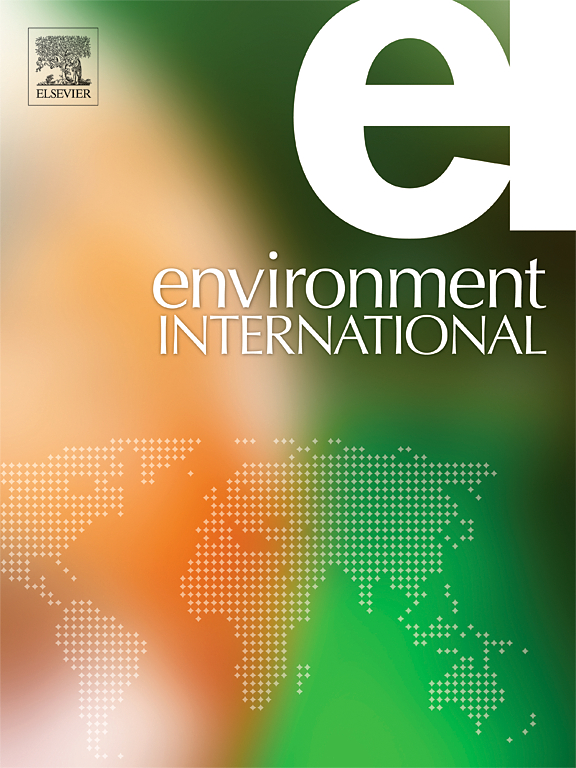评估多环境化学暴露与代谢综合征的关联:机器学习方法
IF 10.3
1区 环境科学与生态学
Q1 ENVIRONMENTAL SCIENCES
引用次数: 0
摘要
代谢综合征(MetS)的发病率不断上升,并与心血管疾病和2型糖尿病的风险增加有关,是一个主要的全球公共卫生问题。新出现的证据表明,环境化学暴露可能通过破坏代谢途径在MetS的发展中发挥重要作用。本研究使用了韩国国家环境健康调查(KoNEHS)第4周期(2018-2020)的2960名参与者的数据,通过机器学习(ML)方法研究环境暴露与MetS风险之间的关系。应用了8种机器学习算法,多层感知器(MLP)和随机森林(RF)模型被确定为最佳预测器。MLP的AUC为0.79,RF的F1得分最高,为0.82。这两个模型都强调全氟辛烷磺酸和全氟辛烷磺酸,以及年龄和体重指数,是关键的预测因素。SHapley加性解释(SHAP)和部分依赖图(PDP)显示了线性和非线性的暴露响应模式,表明关键化学物质存在阈值效应。这些发现强调了将环境暴露纳入MetS风险评估的重要性。ML模型提供了强大的预测性能和对化学和代谢相互作用的新见解,倡导采取监管措施减少有害暴露,并将环境因素纳入MetS预防策略。本文章由计算机程序翻译,如有差异,请以英文原文为准。


Assessing the association of multi-environmental chemical exposures on metabolic syndrome: A machine learning approach
Metabolic syndrome (MetS) is a major global public health concern due to its rising prevalence and association with increased risks of cardiovascular disease and type 2 diabetes. Emerging evidence suggests that environmental chemical exposures may play a significant role in the development of MetS by disrupting metabolic pathways. This study used data from 2,960 participants in the Korean National Environmental Health Survey (KoNEHS) cycle 4 (2018–2020) to examine associations between environmental exposures and MetS risk through machine learning (ML) approaches. Eight ML algorithms were applied, with the multilayer perceptron (MLP) and random forest (RF) models identified as optimal predictors. The MLP achieved an AUC of 0.79, and the RF achieved the highest F1 score of 0.82. Both models highlighted PFOA and PFOS, alongside age and BMI, as key predictors. SHapley Additive exPlanations (SHAP) and partial dependence plots (PDP) revealed both linear and nonlinear exposure–response patterns, suggesting threshold effects for key chemicals. These findings underscore the importance of incorporating environmental exposures into MetS risk assessments. The ML models provided robust predictive performance and novel insights into chemical and metabolic interactions, advocating for regulatory measures to reduce harmful exposures and integrate environmental factors into MetS prevention strategies.
求助全文
通过发布文献求助,成功后即可免费获取论文全文。
去求助
来源期刊

Environment International
环境科学-环境科学
CiteScore
21.90
自引率
3.40%
发文量
734
审稿时长
2.8 months
期刊介绍:
Environmental Health publishes manuscripts focusing on critical aspects of environmental and occupational medicine, including studies in toxicology and epidemiology, to illuminate the human health implications of exposure to environmental hazards. The journal adopts an open-access model and practices open peer review.
It caters to scientists and practitioners across all environmental science domains, directly or indirectly impacting human health and well-being. With a commitment to enhancing the prevention of environmentally-related health risks, Environmental Health serves as a public health journal for the community and scientists engaged in matters of public health significance concerning the environment.
 求助内容:
求助内容: 应助结果提醒方式:
应助结果提醒方式:


